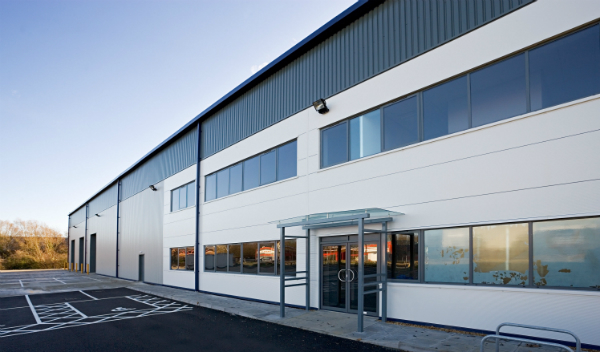There are different methods used to value properties, depending on the property’s type.
When it comes to commercial buildings, the most commonly used approach to determine its value is through the profit method.
As the name suggests, the profit method analyses the profitability of the businesses that occupy a certain building, rather than the value of the building or the land itself.
Property investors commonly use this valuation method for bars, restaurants, hotels and even nursing homes, but not for residential properties (for obvious reasons).
How Does The Profit Method Work?
In order to conduct a commercial property valuation, the building in question should include an operational business, such as a hotel or restaurant.
Do note that it’s not necessary for the entire property to be occupied by commercial businesses and spaces to use this method.
To determine the value of the property, the profit method looks at the earnings, profits, and expenses of the commercial property.
Typically, this method helps to estimate the gross and net profit of a particular business.To find the net profit, you’ll need to use these two basic calculations:
Gross Profit = Gross Earnings – Purchases
Net Profit = Gross Profit – Working Expenses
The gross profit (often confused with the gross earnings) is the final financial figure after all purchase costs are deducted from the gross earnings.
On the other hand, the gross earnings are the total revenue that a particular business has generated but does not take any working expenses or hidden costs into consideration.
Don’t mix up these two figures! If you do, the net profit you calculate will be incorrect.
The working expenses include all costs that are necessary to keep the commercial property running and in business.
This includes water, electricity, telephone bills, insurance and other operational costs.
Once the working expenses of the commercial property and other costs – including the purchase or renovation costs – are deducted from the gross profit, you’ll arrive at a final figure.
This will indicate what is left and how profitable a business really is (or has the potential to be) once purchased: this is the net profit.
For investors, this figure is highly crucial, as it tells them whether an investment, purchase or development of a particular commercial property is actually worth it.

But before you can begin with the valuation, it’s necessary to have access to the relevant financial accounts.
At the very least, you’d need to have an overview of the financials of each business in the property over a period of several years.
Only then can you find the representative valuation figure, as this data will be part of the calculation.
The more data that’s readily available, the more accurate the calculation will be.
It’s important to remember that property investors not only use this method to determine the value of the commercial property, but also to calculate the amount of rent they should be asking from businesses.
Essentially, the present day rental value of a commercial property is dependent on both the present and the future trading potential of a particular property.
On the other hand, the present-day value of a property is also dependent on the anticipation of future rental income.
Calculating The Rental Cost Using The Profit Method
In general, the basic method to arrive at the rental price for a commercial property is by dividing the net profit in half.
The idea behind this calculation is to provide the tenants of the commercial property in question with an income that will help them to sufficiently cover their operational expenses, while still being prepared to pay a rental amount that fits into the open rental market.
In addition, some property investors also look at the potential return on investment (ROI), since their main income is generated through the rent of commercial units in the property.
For example, below we’ve provided a very basic calculation of how property investors can determine the potential ROI for any commercial property they are considering to buy:
Cost to purchase the commercial property = RM300,000
Renovation cost = RM100,000
Total cost = RM300,000 + RM100,000 = RM400,000
Rental income = RM5,000 monthly (RM60,000 annually)
Expenses (water, tax, insurance, etc.) = RM1,000 monthly (RM12,000 annually)
Annual return = Rental income – expenses (RM60,000 – RM12,000) = RM48,000
ROI = Annual return ÷ Total cost (RM48,000 ÷ RM400,000) = 0.12 or 12%
In short, the annual ROI for a commercial property that costs around RM400,000 and brings in an annual return of RM48,000 is 12%.
However, this is a very simplified calculation and doesn’t take any potential loan interests or inflation rates into consideration.
Nonetheless, property investors can use these basic calculations to determine the worth of a potential commercial property investment.
The Benefits Of Using Profit Method
Besides the obvious benefit of determining the accurate value of a commercial property, it’s also a very useful and reliable method for forming an opinion about current market rental prices and the overall rental market.
Another benefit is that the profit method can be used for property valuation of commercial spaces when other methods are unsuitable.
For example, when unique properties such as theme parks, petrol stations, or casinos become available, you can use the profit method to calculate a value estimate even though there are no other similar properties that could serve as a benchmark.
Are There Other Ways To Value Commercial Properties?
Aside from the profit method, some property investors use the comparison method to value a commercial property.
Using this approach, you look at a series of properties with very similar features, such as the square footage, location and the property’s condition in order to determine an approximate value for a particular property.
Although the comparison method is a simpler approach to valuing commercial properties, it’s not always appropriate.
For example, it won’t be useful if there aren’t many comparable properties available. This is why the comparison method is not always appropriate or accurate.
However, the profit method will help to determine an estimated value of a particular property.
No matter whether retail or office space, if you’re interested in buying commercial properties in Malaysia, understanding the valuation process in key.
Want to value a different kind of property? Read more about the different types of property valuation methods and find the approach that best matches your building.
Disclaimer: The information is provided for general information only. PropertyGuru International (Malaysia) Sdn Bhd makes no representations or warranties in relation to the information, including but not limited to any representation or warranty as to the fitness for any particular purpose of the information to the fullest extent permitted by law. While every effort has been made to ensure that the information provided in this article is accurate, reliable, and complete as of the time of writing, the information provided in this article should not be relied upon to make any financial, investment, real estate or legal decisions. Additionally, the information should not substitute advice from a trained professional who can take into account your personal facts and circumstances, and we accept no liability if you use the information to form decisions.






